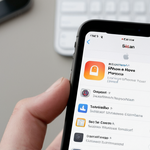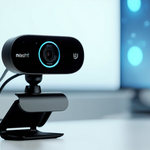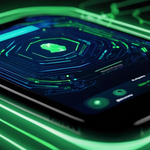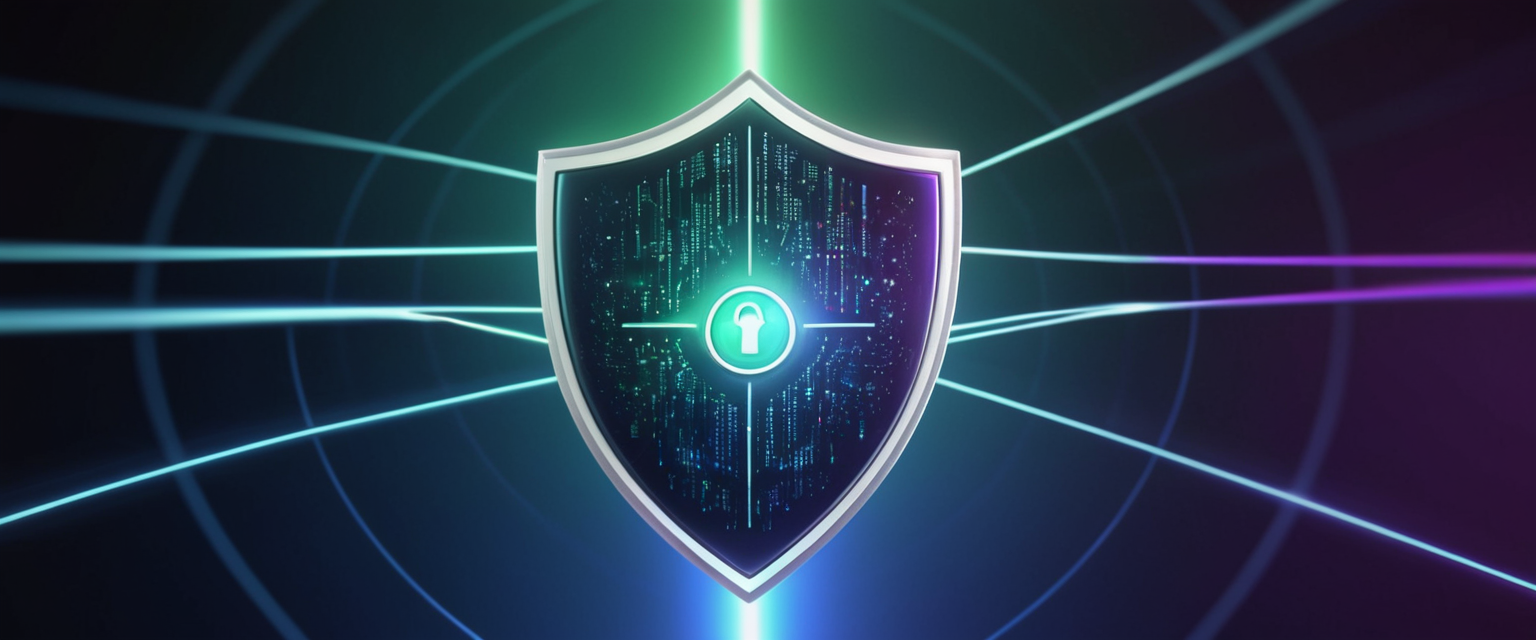
Windows 11 arrives equipped with substantial built-in security capabilities through Microsoft Defender, yet the question of whether additional antivirus protection remains necessary continues to generate significant debate among cybersecurity professionals and end-users alike. This comprehensive analysis reveals that while Microsoft Defender provides robust protection suitable for most general users, the answer ultimately depends on individual usage patterns, threat exposure, and specific security requirements. For everyday computing tasks such as web browsing, email, and streaming content, the integrated antivirus solution proves sufficient for most users; however, those handling sensitive data, engaging in professional development work, or operating in high-risk threat environments may benefit from supplementary security layers. The critical distinction lies not merely in the software itself but in cultivating strong cybersecurity hygiene and understanding that user behavior remains the paramount factor in determining overall system security posture.
The Architecture of Windows 11 Built-in Security
Windows 11 represents a fundamental shift in Microsoft’s approach to operating system security, implementing comprehensive protection mechanisms directly into the core operating system rather than relying solely on separate security modules. The security architecture encompasses both hardware and software protections that work in concert to defend against contemporary threats. Microsoft Defender Antivirus serves as the cornerstone of this security infrastructure, providing real-time, always-on protection that continuously monitors system activity to detect and block malicious software before it can execute. Unlike previous iterations of Windows security that were often criticized as afterthoughts bolted onto the operating system, Windows 11’s security framework has been redesigned with security as a fundamental design principle from inception.
The comprehensive nature of Windows 11 security extends far beyond simple antivirus scanning. The operating system includes Microsoft Defender SmartScreen, an intelligent filtering system integrated into Microsoft Edge that evaluates websites, applications, and downloads against cloud-based reputation databases to identify potentially malicious content. This feature operates across browsers and applications, warning users when they encounter sites known to distribute malware, conduct phishing attacks, or host other dangerous content. Additionally, Windows 11 incorporates Windows Firewall, a network-level protection mechanism that filters incoming and outgoing traffic to prevent unauthorized access through network connections. The firewall intelligently manages both inbound and outbound connections, blocking suspicious applications from establishing network communications while allowing legitimate traffic to flow freely.
Hardware-Level Security Integration
Windows 11 leverages hardware security features that distinguish it from previous operating system generations, particularly through integration with Trusted Platform Module (TPM) 2.0, a security processor embedded in modern computing hardware. The TPM provides cryptographic capabilities that protect sensitive data such as encryption keys and Windows Hello credentials, ensuring that even if a device is physically compromised, attackers cannot access encrypted data without the original device’s TPM. This hardware-based approach creates a security boundary that software alone cannot breach, providing protection against certain categories of sophisticated attacks that specifically target operating system vulnerabilities. Furthermore, Secure Boot validates the integrity of the boot process before the operating system loads, preventing malware from persisting through firmware-level compromises that would survive operating system reinstallation.
The integration of hardware security reaches further through Virtualization-Based Security (VBS), which isolates critical security software in a protected memory region separate from the main operating system. This separation prevents attackers who have achieved code execution in the normal operating system from attacking the security solutions themselves, a common technique among advanced malware developers. Additionally, Windows 11 on certain devices leverages Microsoft Pluton, a security processor integrated directly into the CPU that provides enhanced protection for credentials and sensitive data through a hardware root of trust that cannot be disabled by software-level compromises. These hardware-level protections create layered defenses that substantially raise the difficulty and cost for attackers attempting to compromise Windows 11 systems.
Advanced Threat Detection Capabilities
Windows 11’s approach to threat detection incorporates artificial intelligence and machine learning to identify threats that may not yet exist in traditional malware databases. Smart App Control represents a proactive security paradigm that evaluates applications before they execute, checking them against Microsoft’s cloud-powered intelligence services to predict whether an application is likely safe or potentially dangerous. Rather than waiting to identify malware after it has infected systems, Smart App Control blocks suspicious applications preemptively, preventing unknown or potentially dangerous code from running in the first place. This behavioral-based approach proves especially valuable against emerging threats and zero-day exploits that have not yet been documented and added to traditional signature databases.
Microsoft Defender incorporates cloud-delivered protection that extends threat detection beyond the individual device to leverage intelligence gathered across billions of devices running Microsoft security products. When Microsoft’s security infrastructure identifies a new malware variant on any device, this information propagates to Microsoft’s cloud servers, enabling all other devices to recognize and block the same threat within minutes. This cloud-powered approach means that Windows 11 users benefit from collective threat intelligence far exceeding what any individual device could generate through local analysis alone. The integration of cloud intelligence with local scanning creates a hybrid detection model that identifies threats through both traditional signature matching and behavioral analysis, catching malware through multiple independent mechanisms.
Microsoft Defender Capabilities and Real-World Performance
The evolution of Microsoft Defender from the widely criticized Windows Defender of the Windows XP era to the sophisticated next-generation protection suite included in Windows 11 represents one of the most dramatic improvements in Microsoft’s security offerings. Independent testing by organizations such as AV-TEST, the respected international independent testing service, demonstrates that Microsoft Defender performs comparably to leading third-party antivirus solutions when evaluated against real-world threats. In recent testing cycles covering August 2025, Microsoft Defender achieved perfect or near-perfect scores across protection, performance, and usability categories, earning recognition as a certified antivirus solution worthy of recommendation to end-users.
The real-time protection capabilities of Microsoft Defender operate continuously in the background, monitoring all file activity, network connections, and application execution to detect suspicious patterns before malware can cause harm. Unlike older antivirus approaches that relied primarily on scheduled system scans, Microsoft Defender’s real-time monitoring provides immediate detection of threats as they attempt to execute or spread through the system. This always-on approach proves particularly valuable for ransomware detection, as Controlled Folder Access monitors attempts by unknown applications to modify files in protected directories, blocking the encryption activities that characterize ransomware attacks. When enabled, this feature prevents unauthorized modifications to critical system folders and user document directories, providing protection specifically tailored to address ransomware threats that have become increasingly prevalent in 2025.
Performance Impact and System Resource Utilization
A persistent concern among users considering antivirus software involves the performance degradation that security tools can impose on system responsiveness and application execution speed. Microsoft Defender distinguishes itself through minimal impact on system performance, utilizing only modest amounts of CPU and memory resources even while maintaining continuous real-time protection. Independent performance testing by AV-Comparatives in April 2025 evaluated the impact of various antivirus solutions on system speed across multiple categories including file copying, application launching, web browsing, and downloads. The testing revealed that Microsoft Defender ranked eighth among eighteen tested solutions with an impact score of 13.5, meaning it slows system performance by approximately 13.5 percent relative to an unprotected baseline. While this represents more impact than some premium antivirus solutions, Microsoft Defender’s performance remains competitive when balanced against its cost benefit (free) and the fact that many users experience minimal noticeable slowdown from this level of impact in practical usage.
The efficiency of Microsoft Defender’s resource utilization reflects Microsoft’s ability to integrate the antivirus engine deeply into Windows 11’s core, eliminating redundant system calls and leveraging native operating system features that third-party solutions must replicate through external mechanisms. Conversely, many third-party antivirus solutions achieve their detection results through more aggressive scanning approaches that consequently consume greater system resources. Users who prioritize maximum system performance may find the minimal overhead imposed by Microsoft Defender acceptable, whereas users operating resource-constrained systems or running computationally intensive applications might need to balance security requirements against performance considerations when selecting protection solutions.
The Current Threat Landscape Targeting Windows Users
Understanding whether antivirus protection remains necessary requires examining the contemporary threat landscape and the specific targeting patterns of modern malware creators. Windows remains the predominant target for cybercriminals despite representing only one of several major operating systems, because the vast installed base of Windows computers creates a large attack surface and because Windows users collectively possess significant valuable data and financial resources that motivate attackers. Statistical analysis demonstrates that Windows computers account for the vast majority of malware-related security incidents, with historical data showing that approximately 83 percent of malware discovered in any given year specifically targets Windows systems. This concentration of malware development resources directed at Windows reflects the economic incentives that drive criminal cybersecurity activity.
The urgency of maintaining protection becomes particularly acute when considering that unsupported operating systems face dramatically elevated risk. Microsoft’s analysis of ransomware attacks demonstrates that over 90 percent of ransomware victims were operating unsupported operating systems at the time of compromise. This statistic underscores the importance of maintaining systems with current security patches and updates, and highlights the substantial risk differential between systems running current, supported operating systems like Windows 11 and older systems like Windows 10 approaching end-of-support in October 2025. The January 2025 Microsoft Digital Defense Report identified that over 97 percent of identity attacks leverage password-based compromises rather than sophisticated technical exploits, indicating that user behavior and credential protection matter as much as antivirus capabilities.

Contemporary Malware Threats Requiring Detection
The malware ecosystem of 2025 includes sophisticated threats specifically designed to evade traditional antivirus detection mechanisms, making comprehensive protection increasingly important even for basic users. The CIS Center for Internet Security identified the top malware threats encountered in Q1 2025, with SocGholish commanding 48 percent of all detections, demonstrating the continuing prevalence of downloader malware distributed through compromised websites and fake browser update prompts. Infostealer malware such as Agent Tesla and TeleGrab proliferate widely, capturing credentials, clipboard data, and sensitive files from infected systems for sale in underground criminal marketplaces, enabling subsequent account takeovers and fraud. Remote Access Trojans including Arechclient2, VenomRAT, and emerging threats like Ratenjay provide attackers with complete control over compromised systems, enabling data exfiltration, surveillance, and lateral movement within networks.
The emergence of AI-driven malware and fileless attacks highlights the evolving sophistication of threats that traditional signature-based detection struggles to identify. Fileless malware resides entirely in system memory without writing executable files to disk, leveraging legitimate system tools like PowerShell to execute malicious commands that evade file-based antivirus scanning. These memory-resident threats prove particularly difficult to detect without behavioral monitoring and heuristic analysis capabilities that identify suspicious process behavior regardless of the file origins. The exploitation of zero-day vulnerabilities through tools like the CLFS vulnerability (CVE-2025-29824) demonstrates that even patched systems face risk from emerging exploits that require rapid detection and response capabilities that extend beyond local antivirus functionality.
Microsoft Defender Versus Third-Party Antivirus Solutions
The comparison between Microsoft Defender and third-party antivirus solutions reveals that the built-in protection increasingly rivals commercially available alternatives in core functionality, though differences emerge in supplementary features and organizational ecosystem integration. Microsoft Defender’s fundamental advantage derives from its integration with Windows 11 and the broader Microsoft security ecosystem, enabling seamless correlation of alerts and threat intelligence across endpoints, email systems, and cloud services through the unified Microsoft 365 Defender portal. Organizations relying on third-party antivirus solutions lose this integration, requiring manual correlation of security events across disparate consoles and potentially missing indicators that only become apparent when viewed holistically.
The operational advantages of Microsoft Defender for organizational users extend beyond detection capabilities to encompass significantly simplified security management. System administrators can configure Microsoft Defender policies through Group Policy or Microsoft Intune, applying consistent security configurations across entire device fleets without deploying separate management consoles or maintaining expertise in multiple distinct security product platforms. When an antivirus incident occurs, IT teams investigate and respond through the familiar Microsoft 365 Defender portal rather than learning distinct workflows for each third-party security product deployed across the environment. This operational efficiency translates directly into faster incident response, reduced complexity in security operations, and lower total cost of ownership.
Feature Comparison and Supplementary Capabilities
Third-party antivirus solutions frequently bundle features beyond core antivirus protection, including virtual private network services, identity theft protection, password managers, parental controls, and dark web monitoring capabilities. These supplementary features appeal to users seeking comprehensive security solutions that address threats and risks beyond traditional virus and malware protection. Microsoft Defender offers basic versions of some these capabilities through integration with Microsoft services—for instance, password management capabilities through Microsoft Edge, identity protection through Windows Hello, and parental controls through Family Safety. However, these built-in features often provide less advanced functionality than dedicated third-party solutions, and some capabilities such as VPN services require separate subscription fees even in Windows 11.
The architectural differences between Microsoft Defender and third-party solutions manifest in their integration with Windows. Microsoft Defender operates as a core component of Windows 11 rather than as an external application, enabling deeper system integration that provides better visibility into suspicious activities and faster threat response. Third-party antivirus solutions, by necessity, operate as external programs that must hook into Windows to monitor file system activity, network connections, and process execution. This external architecture sometimes creates compatibility issues where third-party antivirus software conflicts with Windows features or other installed applications, occasionally requiring complex troubleshooting to resolve conflicts. Conversely, Microsoft Defender’s tight integration means that Windows updates automatically include Defender updates, ensuring the protection remains current without requiring separate update management by end-users.
Determining Your Antivirus Needs Assessment
The decision to rely on Microsoft Defender alone or supplement with third-party antivirus requires honest assessment of specific usage patterns, threat exposure, and organizational requirements. General users who engage in typical computing activities—browsing websites, checking email, streaming content, and using productivity applications—benefit from robust protection through Microsoft Defender without requiring supplementary antivirus solutions. The built-in protection addresses the common infection vectors through which general users typically encounter malware: compromised websites, malicious email attachments, and deceptive downloads. Consistent adherence to basic cybersecurity practices including avoiding suspicious links, not downloading files from untrusted sources, and promptly applying security updates provides additional protection that substantially reduces infection risk.
Users handling sensitive data, professional developers, software security professionals, and business organizations managing intellectual property should carefully evaluate whether Microsoft Defender’s protection reaches the threshold required for their specific threat model. Organizations maintaining sensitive customer databases, financial information, or intellectual property face considerably higher risk profiles than general users, justifying investment in advanced endpoint detection and response capabilities that extend beyond traditional antivirus functionality. Development environments where code could be inadvertently modified by malware, or systems where a compromise could enable supply chain attacks affecting downstream users, warrant particularly rigorous security postures. Organizations managing large device fleets benefit from advanced threat management capabilities, sophisticated reporting and compliance tracking, and vendor-agnostic security operations centers integrating data from multiple security tools.
User Categories and Recommended Approaches
For General Home Users: Microsoft Defender provides entirely adequate protection when complemented by basic security practices including keeping Windows 11 updated, maintaining strong unique passwords for important accounts, enabling multifactor authentication where available, and exercising caution when interacting with suspicious emails and websites. The free protection eliminates financial barriers to maintaining active antivirus protection, ensuring that all users—regardless of economic circumstances—can access enterprise-grade threat protection capabilities. No supplementary antivirus software proves necessary for this user category unless specific circumstances warrant additional protection layers.
For Home Users with Technical Proficiency: Power users and technically inclined individuals who understand security concepts may benefit from advanced features offered by third-party solutions such as enhanced VPN capabilities, more granular ransomware protection settings, or advanced threat reporting dashboards. However, many users in this category find that Microsoft Defender, when combined with advanced security practices including regular security audits, conservative software installation practices, and hardware-based security features like TPM, provides acceptable protection levels. The decision to invest in supplementary protection should reflect specific use cases rather than assuming third-party solutions automatically provide superior protection.
For Small and Medium-Sized Businesses: Organizations up to approximately 300 users can leverage Microsoft Defender for Business, an enterprise-grade security solution purpose-built for SMBs that includes endpoint detection and response, vulnerability management, and automated investigation and remediation capabilities at affordable pricing. Organizations exceeding this scale or requiring specific industry compliance frameworks should evaluate Microsoft Defender for Endpoint (Plans 1 and 2) or specialized third-party solutions offering features aligned with specific organizational requirements and compliance obligations.
For Enterprise Organizations: Large enterprises managing thousands of endpoints typically benefit from comprehensive endpoint detection and response solutions such as Microsoft Defender for Endpoint Plan 2, which integrates with broader Microsoft security infrastructure and provides advanced threat hunting capabilities. Enterprise environments managing sensitive data, facing sophisticated nation-state threats, or maintaining multiple isolated networks benefit from security solutions offering centralized threat intelligence, behavioral analytics, and automated response orchestration across the entire environment.
The Critical Role of User Behavior in Security Outcomes
While the sophistication of antivirus software determines a floor for security protection, the behavior of system users fundamentally determines whether that protection translates into actual security. Research consistently demonstrates that humans represent the weakest link in cybersecurity chains, with user behavior determining outcomes more substantially than technology architecture in most security incidents. An individual armed with sophisticated antivirus protection who clicks malicious email attachments, reuses passwords across multiple accounts, or downloads executable files from untrusted websites will likely experience a breach despite robust technical protections. Conversely, a technically proficient user practicing strong security hygiene can achieve excellent outcomes even with basic antivirus protection through careful avoidance of risky behaviors.
The effectiveness of any antivirus solution depends critically on users understanding basic cybersecurity principles and consistently applying them in daily computing activities. Strong password practices—using unique, complex passwords for each account and changing them when compromised—eliminate a major attack vector that malware leverages to establish persistence and lateral movement through compromised systems. Multifactor authentication that requires secondary verification beyond password entry thwarts over 99 percent of account compromise attempts, even when attackers possess the correct username and password combination. Regular security updates that patch known vulnerabilities eliminate the low-hanging fruit that malware developers exploit to achieve initial access to systems.
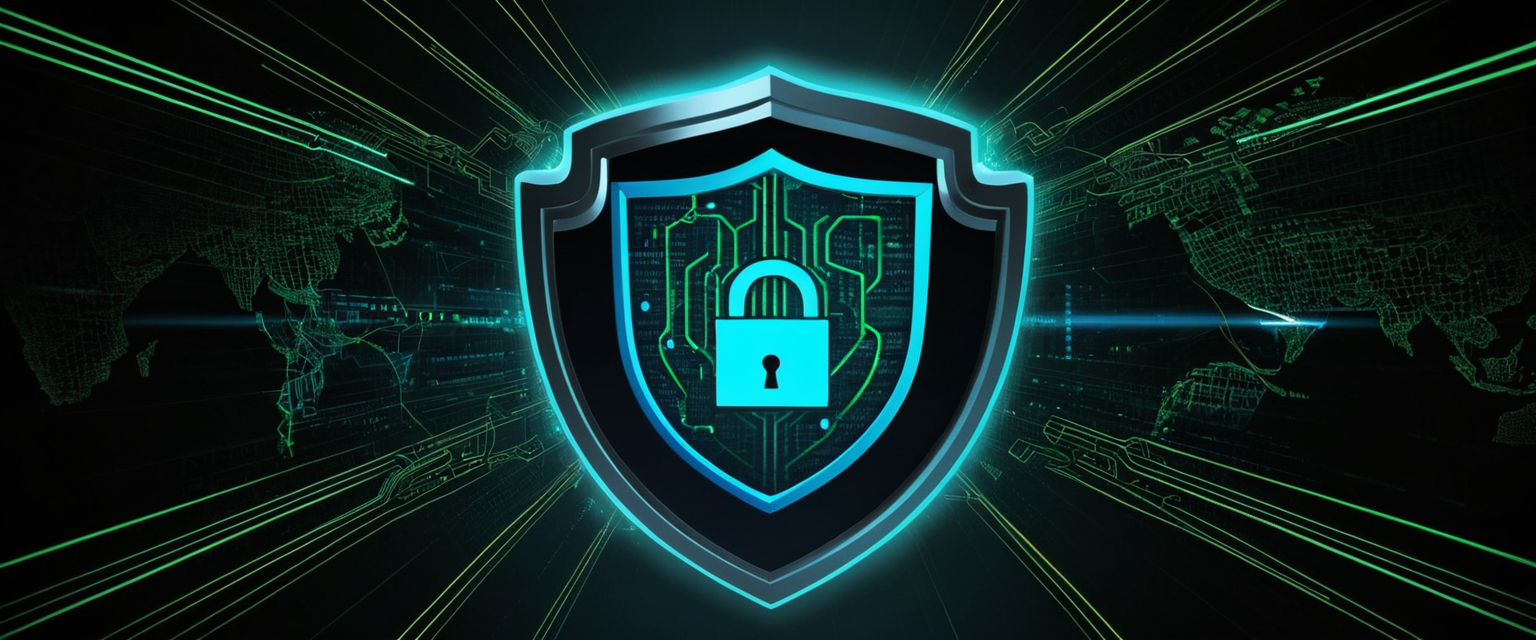
Security Hygiene Best Practices Complementing Antivirus
Comprehensive cybersecurity hygiene requires attention to multiple factors working in concert with antivirus protection to establish layered defenses resistant to multiple attack vectors. Regular system backups ensure that even successful ransomware attacks do not result in permanent data loss, as encrypted files can be recovered from unencrypted backups created before compromise. Device encryption through BitLocker provides protection for data stored on devices that are lost or stolen, ensuring that attackers cannot access sensitive files even if they gain physical possession of the device. Application permission management limits the capabilities of installed applications, preventing compromised applications from accessing sensitive data such as camera feeds, microphone inputs, or location information without explicit user authorization.
Network security practices including securing wireless networks with strong encryption, updating router firmware regularly, and establishing separate networks for guest users and internet-connected devices all contribute to layered security approaches that reduce attack surface exposure. Cloud-based file storage with encryption provides both backup capabilities and the ability to selectively revoke access to files even after they’ve been shared, preventing permanent data loss due to local compromise. Organizations should establish incident response procedures documenting how employees should respond to suspected security incidents, ensuring that potential breaches are rapidly escalated to IT and security teams rather than being suppressed due to fear of punishment.
The Windows 10 End-of-Life Context and Windows 11 Advantages
The approaching end-of-support for Windows 10 on October 14, 2025, creates a watershed moment where many computing environments will transition to Windows 11, offering an opportunity to reevaluate security postures and antivirus strategies. Windows 10 systems after the October 2025 support deadline will receive no additional security patches, meaning that new vulnerabilities discovered after the deadline will remain unfixed, creating progressively easier targets for attackers as the years pass. This context substantially strengthens the case for maintaining active antivirus protection and modern operating systems, as even fully patched older systems face increasing risk from exploits targeting vulnerabilities specific to older architecture.
Windows 11’s security improvements over Windows 10 provide substantial advantages that directly address risks from contemporary malware and attack techniques. The mandatory TPM 2.0 requirement ensures that all Windows 11 systems benefit from hardware-based security capabilities that Windows 10 optional support left inconsistently deployed. Virtualization-based security enabled by default in Windows 11 provides isolation-based protection against kernel-level attacks, a category that frequently evades traditional antivirus detection. Smart App Control represents a paradigm shift from reactive signature-based detection toward proactive analysis of application safety before execution, addressing emerging threats faster than traditional malware signature distribution can achieve.
The security baseline implemented in Windows 11 includes configurations and protections that previous Windows versions left optional or required manual enablement, creating a dramatically improved default security posture without requiring end-user action. For organizations transitioning from Windows 10 to Windows 11, leveraging Microsoft Defender as the primary antivirus solution provides seamless protection continuity while simplifying the transition process and reducing management overhead.
Advanced Threat Scenarios Requiring Supplementary Protection
Certain specialized threat scenarios create compelling arguments for supplementary antivirus solutions or enhanced monitoring capabilities that extend beyond standard Microsoft Defender functionality. Organizations managing highly sensitive data including financial records, healthcare information subject to regulatory compliance, intellectual property, or government classified information operate in threat environments where a single successful intrusion could result in catastrophic consequences. These organizations benefit from advanced endpoint detection and response capabilities that provide detailed forensic visibility into system behavior, enabling security analysts to detect sophisticated attacks that evade signature-based detection mechanisms.
Research and development organizations where leaked intellectual property could undermine competitive advantages justify investment in data loss prevention solutions, advanced threat hunting capabilities, and detailed audit logging that documents who accessed sensitive files and when. Financial services organizations subject to regulatory requirements often must demonstrate through audit logs and compliance reports that appropriate security measures were implemented to protect sensitive data, necessitating antivirus solutions providing detailed compliance reporting capabilities. Software supply chain participants where a compromise could enable attacks against downstream customers face heightened responsibilities for securing development environments through rigorous antivirus and monitoring capabilities.
Security researchers, penetration testers, and other professionals working intentionally with malware samples require specialized approaches to antivirus configuration, potentially including running antivirus in reporting-only modes or using isolated laboratory environments rather than production systems. These specialized use cases justify custom antivirus configurations or supplementary security tools designed specifically for managing malware research activities safely without spreading infections.
Recommendations for Different Computing Scenarios
Home Computing: Home users should rely on Microsoft Defender as their primary antivirus protection, complemented by Windows Update for security patching, multifactor authentication for important online accounts, regular backups of important files, and consistent adherence to basic security hygiene practices. No supplementary antivirus software proves necessary under typical circumstances. Home users should verify that Microsoft Defender is enabled and running in real-time protection mode, perform regular security scans at least weekly, and maintain current Windows Update status. The combination of built-in protection, regular updates, strong passwords, and cautious online behavior provides robust protection against contemporary threats while avoiding the performance impact and management complexity of third-party antivirus solutions.
Small Business Operations: Small businesses with limited IT resources should consider Microsoft Defender for Business as a cost-effective enterprise-grade protection solution providing endpoint detection and response, vulnerability management, and automated remediation capabilities designed specifically for organizations with limited security staff. The wizard-based onboarding and simplified management interface enable small businesses to deploy sophisticated security protections without extensive training or dedicated security personnel. Businesses outgrowing Microsoft Defender for Business should transition to Microsoft Defender for Endpoint (Plan 1 or Plan 2) as they scale, ensuring continuity of protection mechanisms while gaining access to more advanced threat hunting and response automation capabilities.
Development and Technical Environments: Development teams and technical professionals should implement strict controls over development environment security, including privileged access management limiting developer capabilities to only necessary permissions, regular security scanning of codebases for vulnerable dependencies, and careful monitoring of changes to production systems. While Microsoft Defender provides adequate basic protection, development organizations should consider supplementary security tools addressing supply chain security, dependency vulnerability scanning, and secure code review capabilities that extend beyond traditional antivirus functionality. Security researchers and penetration testers working with malware samples require specialized antivirus configurations, potentially including isolated laboratory systems where antivirus is disabled to avoid preventing malware execution during analysis.
Enterprise Environments: Enterprise organizations should deploy Microsoft Defender for Endpoint Plan 2, which provides the most comprehensive endpoint security capabilities including advanced threat hunting, automated investigation and remediation, and integration with broader Microsoft 365 security infrastructure. Large organizations should complement endpoint protection with network segmentation, access control implementation through identity-aware policies, and security information and event management systems correlating security events from across the environment. Enterprise security operations centers should implement threat intelligence sharing with relevant information sharing and analysis centers, ensuring that threat intelligence flows into the organization’s security decision-making processes.
Evaluating Third-Party Alternatives When Considering Supplementary Protection
For users determining that supplementary antivirus beyond Microsoft Defender would benefit their specific threat model, several well-regarded alternatives merit consideration based on performance testing and feature evaluation. Independent testing by AV-TEST consistently evaluates antivirus solutions against real-world threats, with recent testing demonstrating that solutions such as Norton 360, Kaspersky Premium, McAfee Total Protection, and Bitdefender achieve excellent protection rates while maintaining acceptable performance impact. Kaspersky’s availability in certain jurisdictions, particularly in the United States where the federal government has restricted Kaspersky sales due to security concerns regarding Russian ownership, may limit this option for some users, though alternatives such as TotalAV, Surfshark, and Norton provide comparable protection.
Performance testing reveals measurable differences in how various antivirus solutions impact system responsiveness. McAfee Total Protection and AVG Internet Security rank among the top performers with minimal impact on system speed, while solutions such as Bitdefender Total Security and Total Defense show higher performance impacts. Users prioritizing gaming or running computationally demanding applications should carefully review performance testing data to ensure selected antivirus solutions maintain acceptable system responsiveness. Conversely, users prioritizing maximum security protection might accept greater performance overhead in exchange for more comprehensive threat detection and response automation.
Looking Forward: Emerging Threats and Evolving Protection Requirements
The cybersecurity threat landscape continues evolving in ways that directly impact antivirus necessity and effectiveness going forward. The proliferation of AI-augmented malware that adapts attack techniques based on local conditions and defensive responses represents a category of threat that traditional signature-based antivirus detection struggles to address. Microsoft Defender’s incorporation of behavioral analysis and machine learning provides some defense against these emerging threats, though determining whether behavioral approaches sufficiently address AI-driven malware remains an open question requiring continued monitoring and testing.
The shift toward passwordless authentication through passkeys and Windows Hello biometric authentication reduces the efficacy of credential-stealing malware that has dominated threat vectors for decades. As organizations and users increasingly adopt phishing-resistant multifactor authentication, attackers will likely shift focus toward zero-day vulnerabilities and supply chain attacks targeting software distribution mechanisms. These evolved attack vectors may increasingly exceed traditional antivirus capabilities, requiring security approaches addressing vulnerability management, software composition analysis, and supply chain security that extend beyond endpoint antivirus protection.
The expansion of computing into Internet of Things devices, cloud services, and containerized application environments creates new attack surfaces and security models where traditional endpoint antivirus proves insufficient or inapplicable. Organizations maintaining diverse technical environments will increasingly need security solutions addressing multiple platforms and architectures rather than single-platform antivirus focused exclusively on Windows systems. The Microsoft security roadmap suggests continued investment in integrated threat intelligence, cloud-delivered protection, and behavioral analytics that will likely position Microsoft Defender to remain competitive with specialized third-party solutions even as threats evolve.
Your Windows 11 Antivirus Verdict
The evidence from independent testing, security research, and real-world usage patterns conclusively demonstrates that Microsoft Defender provides enterprise-grade antivirus protection suitable for the vast majority of Windows 11 users without requiring supplementary third-party antivirus solutions. The built-in protection incorporates sophisticated threat detection mechanisms including real-time scanning, cloud-delivered protection leveraging global threat intelligence, behavioral analysis identifying suspicious patterns, and integration with hardware security features providing protection layers that malware must penetrate sequentially. For general users practicing basic cybersecurity hygiene—maintaining updated systems, using strong unique passwords, enabling multifactor authentication, avoiding suspicious downloads, and exercising caution with email attachments—Microsoft Defender provides protection levels sufficient to prevent the vast majority of common threats.
The decision to supplement Microsoft Defender with third-party antivirus should reflect specific circumstances including sensitivity of data managed, organizational compliance requirements, or specialized use cases rather than assuming third-party solutions automatically provide superior protection. Organizations managing sensitive data, developers working in environments where intellectual property protection proves critical, and users facing higher-than-average threat exposure benefit from careful evaluation of whether supplementary protection addresses specific gaps in their threat model. However, for the general user population, the combination of Microsoft Defender’s robust built-in capabilities, the comprehensive security architecture of Windows 11, regular security updates, and consistent adherence to security best practices provides a protection level that rivals that achievable through significantly more complex and resource-intensive third-party solutions.
The critical insight emerging from comprehensive analysis is that antivirus protection remains essential for Windows 11 users—this conclusion is unambiguous and universal. The nuanced question concerns which antivirus solution appropriately addresses individual threat models and usage scenarios. For most users, that answer is Microsoft Defender, eliminating costs, system complexity, and performance impact while providing protection levels sufficient for their actual threat exposure. For specialized users and organizations managing particularly sensitive or critical systems, evaluation of supplementary solutions addressing specific requirements represents a sound investment in layered security approaches. Ultimately, maintaining active antivirus protection, keeping systems current with security patches, and consistently practicing strong cybersecurity hygiene provide protection sufficient to defend against the vast majority of threats in the contemporary threat landscape.
Protect Your Digital Life with Activate Security
Get 14 powerful security tools in one comprehensive suite. VPN, antivirus, password manager, dark web monitoring, and more.
Get Protected Now


